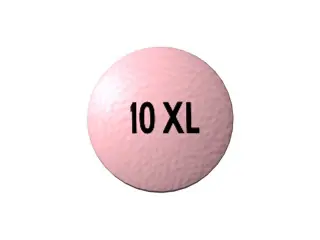| Package | Dosage | Price | Price per Dose | |
|---|---|---|---|---|
| Dosage: 2,5mg | ||||
| 240 pill | 2,5mg | AUD448.67 | AUD1.87 | |
| 120 pill | 2,5mg | AUD226.99 | AUD1.90 | |
| 90 pill | 2,5mg | AUD181.59 | AUD2.00 | |
| 60 pill | 2,5mg | AUD125.50 | AUD2.08 | |
| 30 pill | 2,5mg | AUD66.74 | AUD2.24 | |
| Dosage: 5mg | ||||
| 360 pill | 5mg | AUD1,191.17 | AUD3.31 | |
| 240 pill | 5mg | AUD806.57 | AUD3.37 | |
| 180 pill | 5mg | AUD619.61 | AUD3.45 | |
| 120 pill | 5mg | AUD421.97 | AUD3.53 | |
| 90 pill | 5mg | AUD331.16 | AUD3.69 | |
| 60 pill | 5mg | AUD232.34 | AUD3.87 | |
| 30 pill | 5mg | AUD125.50 | AUD4.14 | |
| 20 pill | 5mg | AUD88.11 | AUD4.43 | |
| 10 pill | 5mg | AUD48.05 | AUD4.75 | |

Oxybutynin Description
Overview of Oxybutynin
Oxybutynin is a medication commonly prescribed to manage symptoms of overactive bladder. It belongs to a class of drugs known as anticholinergics or antimuscarinics. These medications work by relaxing the muscles in the bladder, which helps to reduce urgency, frequency, and incontinence. Oxybutynin is available in various forms, including tablets, transdermal patches, and syrup, offering flexible options for different patient needs. This versatility makes it a popular choice among healthcare providers for treating urinary control issues.
Effectiveness and Patient Reviews
Many users report noticeable improvements in their symptoms after starting oxybutynin treatment. Patients often experience a significant reduction in the frequency of urinary urges and accidents, which greatly enhances their quality of life. However, the effectiveness can vary depending on individual factors such as age, the severity of symptoms, and adherence to the prescribed dosage. Some patients notice immediate benefits, while others may need to use the medication for several weeks to achieve optimal results. Overall, oxybutynin is regarded as a reliable and effective solution for those suffering from overactive bladder.
Common Side Effects
While oxybutynin provides symptomatic relief, it can cause side effects in some users. The most common adverse reactions include dry mouth, dizziness, constipation, and blurred vision. These occur because the medication affects other parts of the body besides the bladder. In some cases, patients might also experience difficulty urinating or increased heart rate. Most side effects are mild and tend to diminish over time as the body adjusts to the medication. However, if adverse effects persist or worsen, it’s essential to consult a healthcare professional.
Precautions and Considerations
Oxybutynin should be used with caution in certain populations. Elderly patients are more susceptible to side effects like confusion, hallucinations, or urinary retention. Patients with urinary retention, glaucoma, or gastrointestinal disorders should inform their doctor before starting treatment. It’s also important to discuss other medications being taken, as oxybutynin can interact with certain drugs, potentially leading to undesirable outcomes. Proper dosing and adherence to medical advice are crucial to ensure safety and effectiveness.
Conclusion
Oxybutynin remains a widely used medication for controlling overactive bladder symptoms. Its ability to significantly reduce urinary urgency and incontinence has improved many patients’ lives. Despite its benefits, awareness of potential side effects and precautions is essential for safe use. Patients are encouraged to communicate openly with their healthcare providers to tailor the treatment plan to their individual needs. With appropriate management, oxybutynin can be a valuable tool in the management of urinary control issues.

